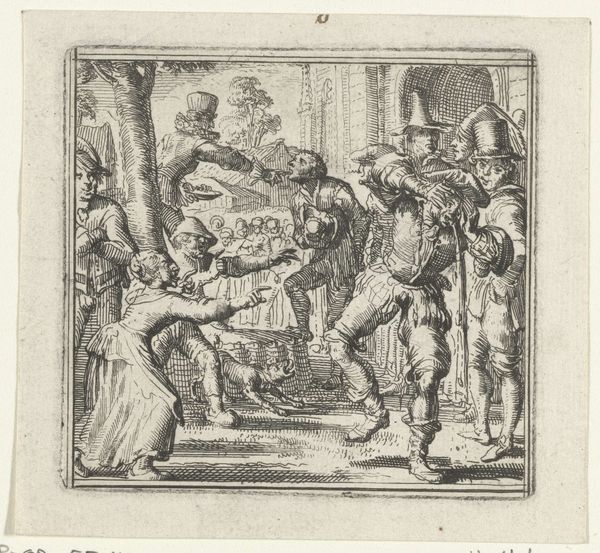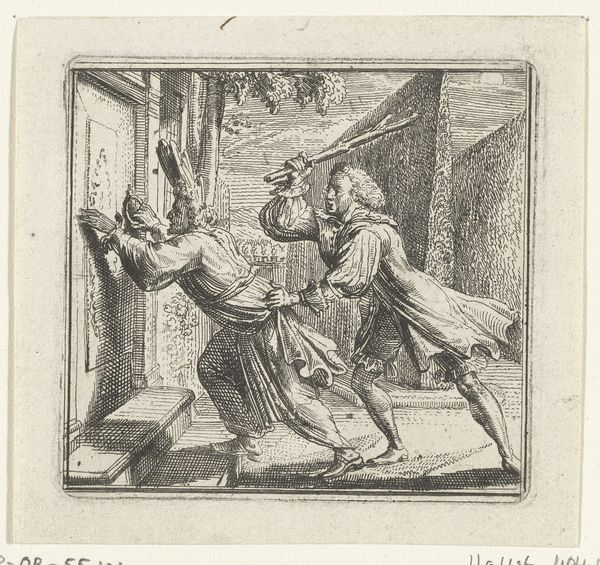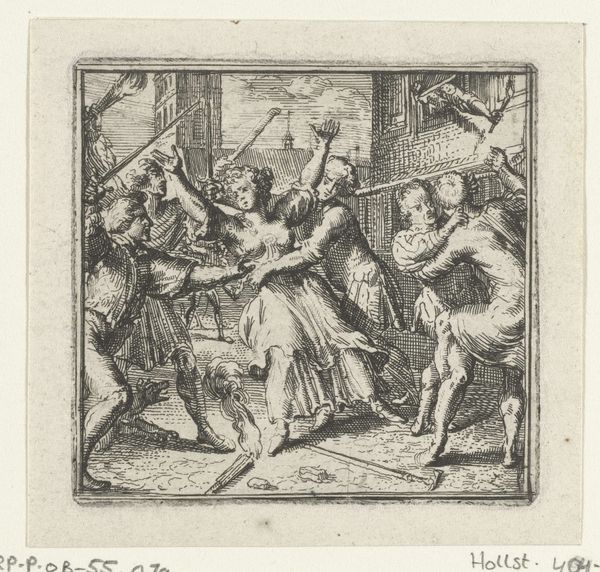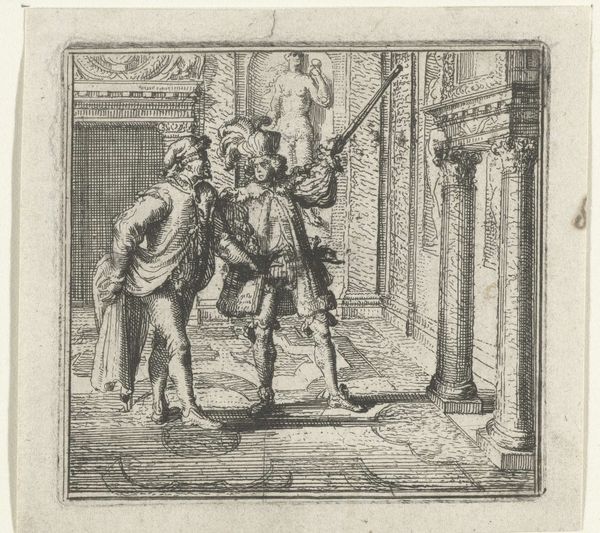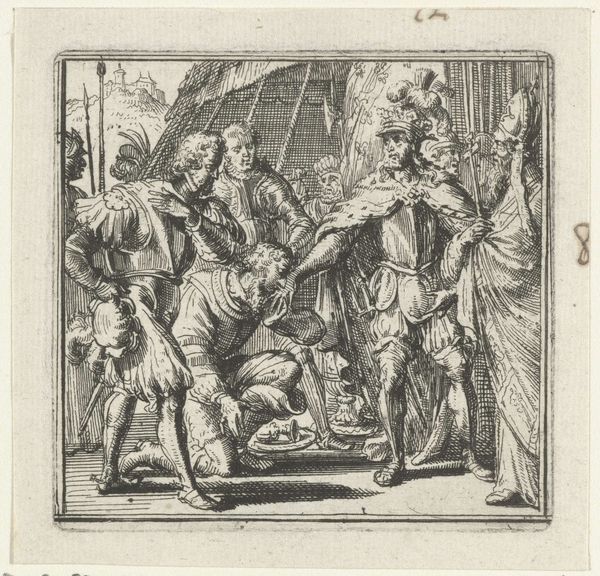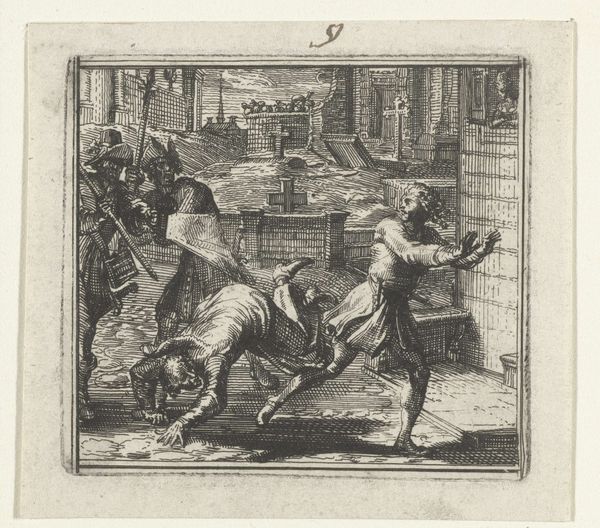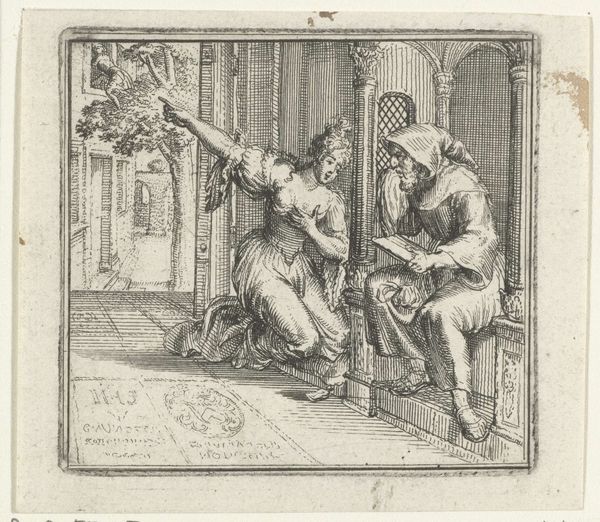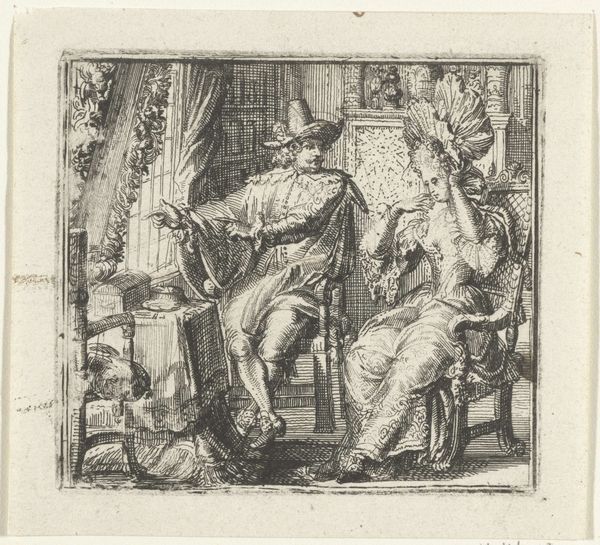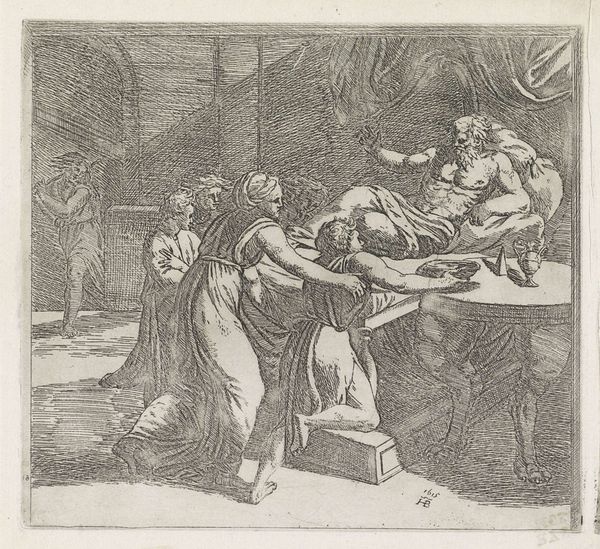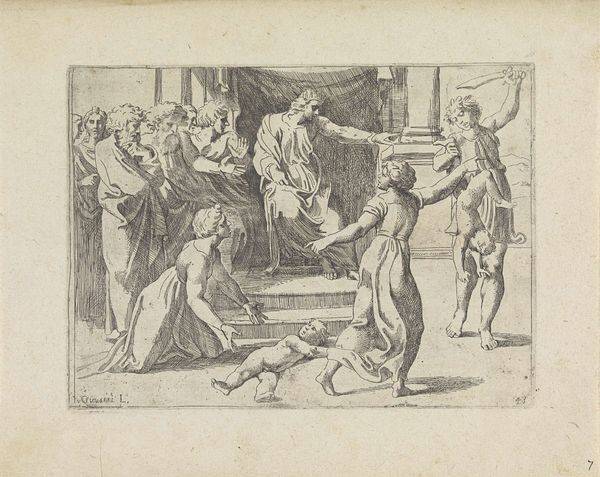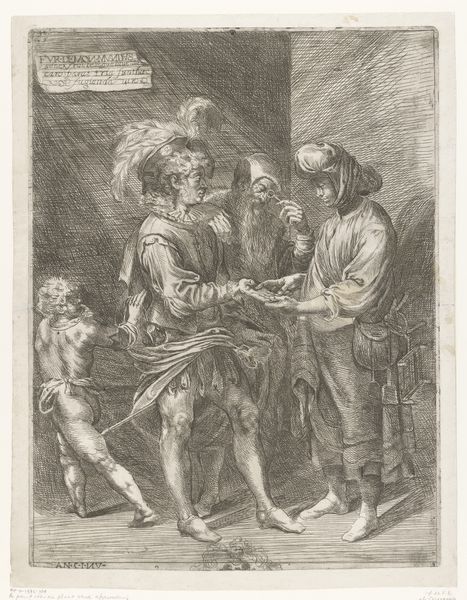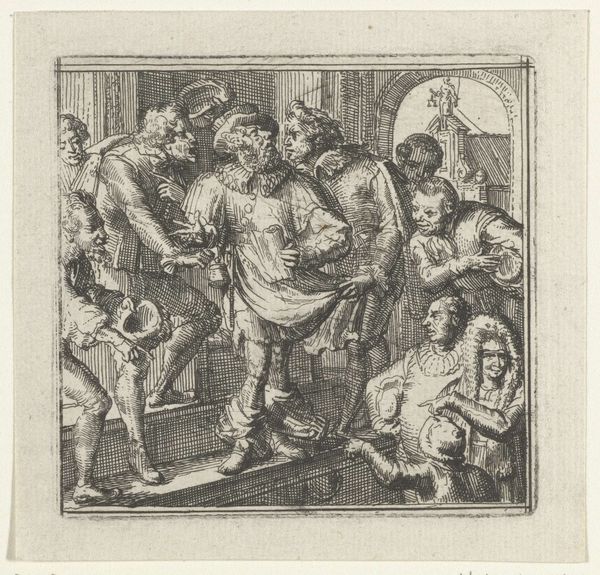
print, engraving
#
narrative-art
#
baroque
# print
#
cityscape
#
genre-painting
#
engraving
Dimensions: height 77 mm, width 78 mm
Copyright: Rijks Museum: Open Domain
Curator: This piece really captivates me. What is your initial reaction to the artwork? Editor: It feels theatrical, almost staged. The figures seem to be presenting themselves rather than naturally interacting. Curator: Indeed. This is "Illustratie voor de Decamerone van Boccaccio" by Romeyn de Hooghe, made around 1697. The Rijksmuseum tells us it's an engraving. It's interesting to consider the role these illustrations played within the cultural consumption of literature. How were they received and circulated? Editor: The level of detail that’s achievable through engraving on this scale is astonishing, particularly when we think of the processes and skills involved. The linear quality it gives to the textile patterns of clothing adds an extra layer of texture, doesn't it? I also notice the prominence given to city scenes: is it relevant? Curator: It is quite typical to this era's aesthetics, where emphasis was given on detailing of garments to create drama. In terms of city scenes, that reflects the baroque era's obsession to contextualize stories around important historical landmarks and societal changes. This also allowed for wider dissemination of ideas about civic life through popular texts. What I wonder is about the impact of seeing narratives translated visually, in contrast to only experiencing the text. Editor: I’m drawn to the contrasting depiction of labor and leisure. We have these affluent figures positioned against the backdrop of the port city, likely built on maritime industry and the exploitation of workers. Curator: Precisely! Consider how this visual juxtaposition comments on societal inequalities and the privileges enjoyed by certain classes. Was de Hooghe attempting social critique, or merely reflecting the realities of his time? Editor: That's key. De Hooghe definitely challenges our perceptions of societal norms through these scenes, regardless of intention. This work, and how it might make people question the structures in place then, certainly brings additional layers to consider how imagery can shape social and political opinions of an era. Curator: I agree, analyzing how and why materials are combined here expands understanding of visual culture back then. Editor: Indeed, this engraving's social impact goes way beyond decorative or illustrative purpose.
Comments
No comments
Be the first to comment and join the conversation on the ultimate creative platform.
